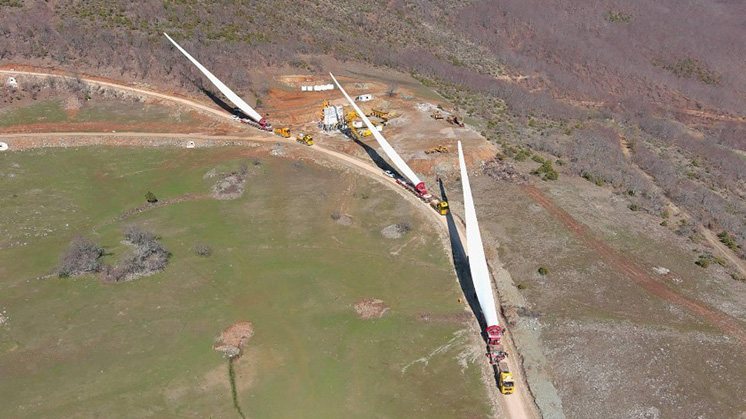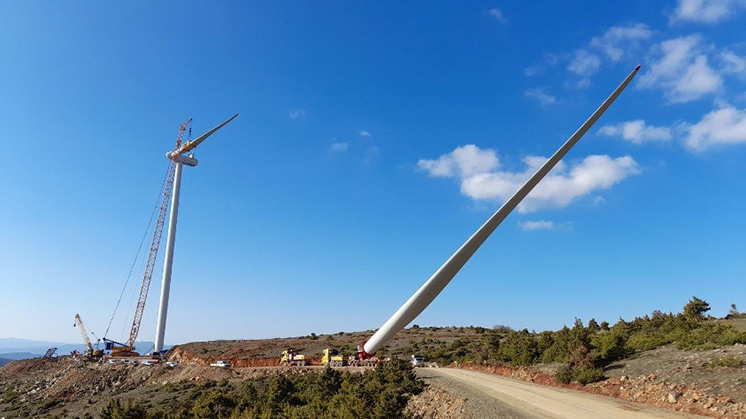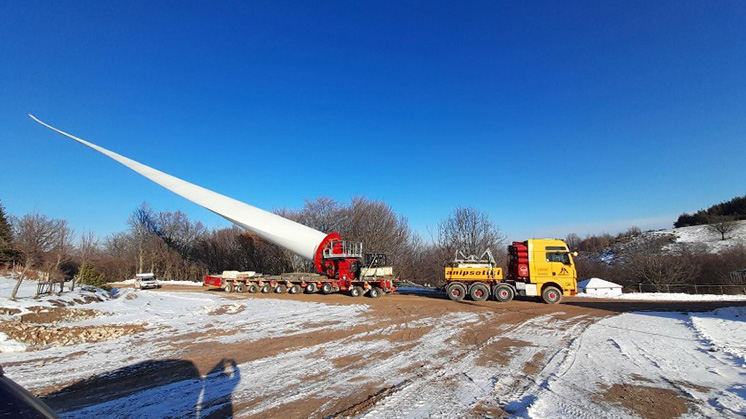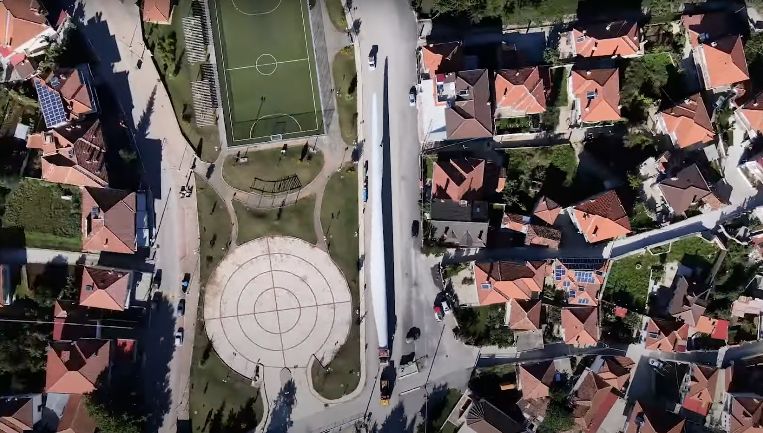BLADE LIFTER
Do you know Blade Lifter? The new transport system for wind turbine blades
Historically, transporting wind turbine blades has not been easy due to the increasing size and weight of the blades and the fact that wind farms are often located in remote and inaccessible areas. To reduce the environmental impact of this transport, Blade Lifter technology was developed, which uses the inclination of the blades to facilitate their transport.



Typically, a wind turbine has three blades moving about a horizontal axis, which produce kinetic energy as they rotate.Each of these blades ranges in length from 5 metres to well over 100 metres and weighs several tens of tonnes. Considering that a wind farm can have more than 100 wind turbines, each with its own three blades, transporting these important wind giants is no easy task. Especially when many of these wind farms are located in rural areas that are difficult to access, often with narrow, winding mountain roads.
Given the growth in both length and weight of wind blades in the search for maximum efficiency, there was also the need to find a suitable means of transport that would reduce the environmental impact, as it was sometimes necessary to create new roads, widen existing ones or remove communication poles. In addition, when conditions are difficult, it is usually decided to increase the stock of blades in the park so that, in the event that they are needed, they do not have to be transported again.
HOW DOES THE BLADE LIFTER SYSTEM WORK?
In response to these needs, Blade Lifter technology was born, a pioneer in Europe, which uses the inclination of the blade to make it easier to transport. By means of a mechanism, normally a hydraulic lift, the blade is raised, reaching an inclination of around 65 degrees, or even rotated, to avoid the sail effect of the wind, thus making it easier to drive on narrow roads, with sharp bends or even through urban centres. Transport is carried out using a trailer, with at least ten axles. This mechanism is incorporated behind the tractor head, which allows both turning the blade and lifting it in the vertical plane, always fixing the base of the blade.
The system makes it possible to transport blades up to 80 metres long on roads with sharp bends.

The rear trailer is coupled to the assembly for improved manoeuvrability.

The blade is tilted up to 60º above the horizontal axis, shortening the assembly.
The blades can be rotated 360° while driving (e.g. to avoid the wind). A third vertical rotation axis allows a lateral angle of 20°. A very useful option in heavily built-up areas.

An operator accompanies the Blade Lifter on foot, with a remote control to adjust the position of the blade.
Maximum wind speed for transporting the lifted blade.
BLADE LIFTER
This system of tilting the blades during transport reduces the environmental impact, avoiding changes in road layout.
This system of tilting the blades during transport reduces the environmental impact, avoiding changes in road layout.
The blade is tilted up to 60º above the horizontal axis, shortening the assembly.
The system makes it possible to transport blades up to 80 metres long on roads with sharp bends.
The blades can be rotated 360° while driving (e.g. to avoid the wind). A third vertical rotation axis allows a lateral angle of 20°. A very useful option in heavily built-up areas.
The rear trailer is coupled to the assembly for improved manoeuvrability.
Maximum wind speed for transporting the lifted blade.
SEE INFOGRAPHIC: Blade Lifter [PDF]
The lifting and tilting of the blade are carried out in the most complicated stretches of the route and where it is therefore necessary, adapting its position to overcome the obstacles encountered. This manoeuvre is not simple and requires the presence of a specialised operator with experience in its handling, as each situation is different and requires adaptation of the technique. For example, regarding to the wind, it is very sensitive to gusts of more than 10-12 m/s.
Blade lifter, an engineering challenge for moving blades
In the case of the Iberdrola group, this technique has been used in the Mikronoros wind farm and will be used in Askio,achieving a lower environmental impact in terms of access roads, as it requires a smaller width than other types of transport.
ADVANTAGES AND DISADVANTAGES OF THE BLADE LIFTER SYSTEM
This innovative technology is starting to become more prevalent in the construction of new wind farms and, although it continues to be developed and important innovations are being incorporated, it has some important advantages and disadvantages:
- Advantages
![]()
Reduced environmental impact
![]()
Reduction of civil works requirements
![]()
Cost optimisation
- Disadvantages
![]()
When the blade is raised or tilted, the trailer speed must be reduced to 5 km/h.
![]()
It is wind-sensitive, the maximum speed at which it is possible to transport the high blade is 10 m/s.





